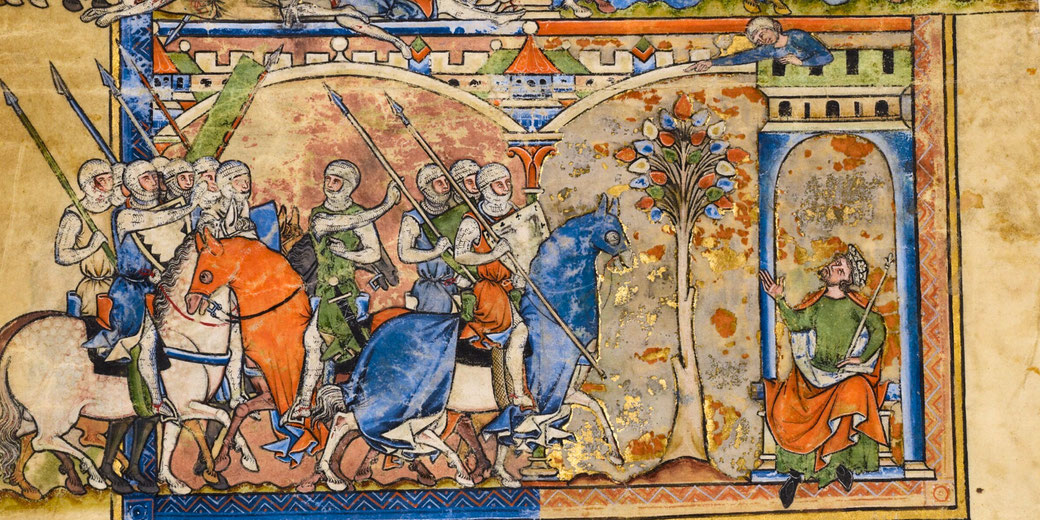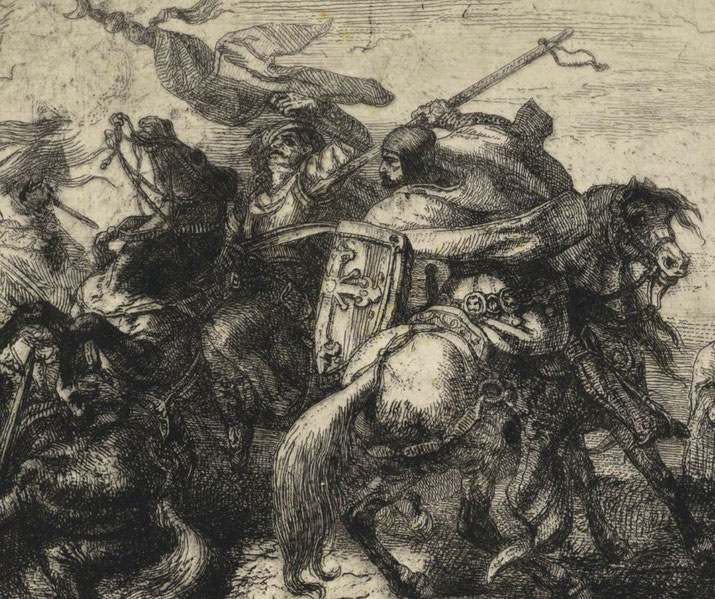How the Crusades changed Europe forever

When Pope Urban II called for the First Crusade at the Council of Clermont on 27 November 1095, he unleashed a force that would change Europe in several unexpected ways.
Over the following two centuries, later crusading expeditions, which nominally had the goal of reclaiming the Holy Land from Muslim control, crossed the Mediterranean.
The results of these efforts, however, went far past the battlefield in many cases. European society changed, to varying degrees, under the weight of new economic pressures, shifting political structures, cultural contact, and waves of religious energy that moved people and ideas across thousands of kilometres.
The Social Impact of the Crusades
Before 1095, European life remained fixed in a rigid feudal order where peasants rarely left their villages and lords focused on controlling land.
Once the call to crusade spread across the continent, that stability fractured in many regions.
Estimates from the time suggest that approximately 35,000 to 60,000 people took part in the First Crusade, many of whom were knights, foot soldiers and non-combatants, which had made it one of the largest gatherings of people from medieval Europe when counting both fighters and support staff.
Thousands of nobles abandoned their local disputes to pursue military glory in the east, and as a result, many had had borrowed against or sold their estates, often to fund their journey to fund the journey, since property ownership passed into new hands, which often ended up with monarchs who used them to expand royal authority.
In France, King Philip II absorbed several estates that had been vacated by deceased crusaders, using them to strengthen Capetian royal control.
For example, when crusading nobles died abroad without heirs, their lands often reverted to the Crown or were absorbed by rival families, and over time this redistribution of land shifted the balance of power within kingdoms.
At the same time, noble families back in Europe had to manage affairs without male leadership.
In several cases, many women took control of estates, settled disputes, collected rents, and arranged marriages.
Adela of Normandy was the wife of Stephen of Blois and governed their lands in his absence and wielded considerable political authority until his return from the First Crusade.
In some regions, female regency became more common, as a practical necessity rather than a formal right.
Among the lower classes, the movement inspired intense religious feeling in some areas.
Entire groups of peasants, driven by promises of salvation and fear of damnation, left their homes without proper equipment or military training.
For instance, the People's Crusade of 1096 ended in disaster near Civetot in Asia Minor, where Turkish forces attacked and killed most of its 20,000-strong peasant army.
Yet it revealed to some extent how deeply crusading ideas had reached into the minds of ordinary people.
At the same time, crusading zeal created dangerous consequences for some minority groups in Europe.
Several Jewish communities in certain regions suffered some of the earliest violence of the crusading period.
Beginning in the Rhineland, crusaders massacred Jews in cities like Mainz and Worms.
They looted homes, burned synagogues, and slaughtered families, often without resistance from local authorities.
In some cases, bishops attempted to shield Jewish populations, but their efforts failed.
The writer Solomon bar Simson recorded horrible massacres in Mainz and Worms, where crusading mobs murdered hundreds of Jews.
Modern estimates suggest at least 1,000 were killed across several Rhineland cities, and as a result, the long-term consequence of these early attacks was a pattern of religious hostility that grew in later centuries in many regions and became part of European society.

The Crusades and Trade
During the height of the Crusades, economic change sped up in certain regions as European merchants and bankers responded to new opportunities.
Italian port cities, particularly Venice, Genoa, and Pisa, which transported crusaders and their supplies to the eastern Mediterranean, grew wealthy.
In return, their leaders often won special trading rights with both the crusader states and Muslim ports.
In 1104, Genoa secured one-third of the spoils and a quarter within the city of Acre after it had assisted in its capture, a deal that provided the republic with profitable trading rights and customs income, and as a result, over time those agreements expanded into long-term trading colonies.
By the early thirteenth century, cities like Venice had held dockyards and marketplaces in Constantinople, Tyre, and Acre.
These outposts allowed many merchants, who bought spices, silks, glassware, sugar, and cotton in larger amounts, to trade more easily.
In fact, the Fourth Crusade provided Venice with direct control of key ports after the sack of Constantinople in April 1204.
Crusading ships had largely become trade fleets. During the looting, crusaders transported treasures such as the four bronze horses now displayed at St. Mark’s Basilica in Venice.
Back in Europe, the effects spread inland as nobles who returned from the Holy Land wanted the goods they had experienced abroad, and as demand for eastern luxuries grew, European traders expanded trade routes and set up banking systems to handle long-distance credit.
The Riccardi of Lucca and the Peruzzi of Florence became prominent banking families who used letters of credit to finance long-distance trade routes opened by the Crusades.
For example, Florentine bankers had developed early bills of exchange to avoid carrying coin across dangerous roads.
Trade fairs in cities like Troyes and Bruges had become centres of international trade.
Alongside finished goods, new agricultural products entered Europe. Sugar cane, citrus fruits, and rice cultivation spread westward.
Sugar plantations established by crusaders in Cyprus and Crete became models later replicated in the Canary Islands and, eventually, in the Americas, and as a result, new systems of labour, which included enslaved workers from conquered regions, became common in several Christian-held territories.
Eventually, these models would influence the development of colonial economies.
Political Reverberations
Crusading also affected political power, as kings often used their role in these campaigns to assert moral authority and demand financial support from the Church and their subjects.
For example, Richard I of England and Louis IX of France turned their crusading efforts into public spectacles that enhanced their personal status.
As such, their actions often allowed them to justify new taxes, delay legal obligations, and weaken troublesome nobles.
In addition, the papacy gained influence as popes increasingly claimed the right to direct crusading efforts and extended this authority into other conflicts.
Under Innocent III, the idea of crusade expanded to internal enemies, and as a result, he initiated campaigns against heretical movements like the Cathars in southern France and asserted that Christian kings should accept papal control in matters of war.
That claim remained disputed, yet many rulers accepted it for a time to gain Church support.
Within the Holy Land, new Christian states such as the Kingdom of Jerusalem and the Principality of Antioch operated under a mix of European feudal customs and local needs.
Rulers granted land to newcomers, issued charters in Latin and Arabic, and negotiated with Muslim neighbours for truces and trade.
Some even married into eastern Christian or Muslim families to secure loyalty and peace.
Another major political result involved the rise of military orders. The Knights Templar, the Hospitallers, and the Teutonic Knights began as religious orders that defended pilgrims and provided care for the sick.
Over time, they acquired extensive estates and the financial means to act with growing independence.
By the mid-thirteenth century, the Templars ran a banking network that rivalled secular institutions, and their fortresses dotted European and Middle Eastern regions.
By the early 1300s, the Templars owned thousands of properties across Europe, some of which were recorded as over 9,000, which brought in much income from tenant farming and tolls.
When Philip IV of France sought to break their power in the early fourteenth century, he used accusations of heresy to justify their arrest and execution.
Knowledge and Cultural Exchange
Cultural exchange often occurred wherever crusaders, merchants, and clergy met people from the east.
At Antioch, Acre, and Jerusalem, Europeans came into contact with Greek and Arabic manuscripts that kept classical learning.
For instance, medical texts by Galen and philosophical works by Aristotle were often found in Muslim libraries and brought back westward.
Gerard of Cremona translated over 70 Arabic texts into Latin, which included Ptolemy’s Almagest and Avicenna’s Canon of Medicine.
Jewish, Muslim, and Christian translators in Sicily and Spain produced Latin versions of these texts, which entered universities by the twelfth century.
Scientific tools such as the astrolabe, which had already been introduced to Europe through Islamic Spain before the Crusades, improved timekeeping and navigation and became more widely used through continued contact with the Islamic world.
Mathematical methods that used Hindu-Arabic numerals made calculations more precise, especially in trade and astronomy.
The introduction of Arabic numerals and the concept of zero had gradually replaced Roman numerals in European scholarly and commercial contexts by the fourteenth century.
Translated works on optics, anatomy, and geometry had introduced European scholars to more advanced ideas than those that were kept in monastic scriptoria, and as a result, such knowledge helped start later developments in science.
Art and architecture also reflected new influences as Crusaders brought back architectural ideas used in castle design, such as concentric walls and round towers, and as a result, fortresses like Krak des Chevaliers demonstrated advanced defensive planning that influenced castle architecture in the Crusader states and may have informed later developments in European fortification design.
Gothic churches used features like pointed arches and ribbed vaults that had earlier examples in Islamic architecture, especially in Syria and Anatolia, as elements of Islamic architectural style seen in the Great Mosque of Córdoba influenced Gothic designs in southern France, such as those found in the Abbey of Saint-Denis.
Written records created by pilgrims, knights, and monks described what they had seen in the east.
Some accounts exaggerated or misunderstood local customs, but others described cities, markets, and societies in clear detail.
The Itinerarium Peregrinorum et Gesta Regis Ricardi, a Latin chronicle of Richard the Lionheart’s crusade, offered clear descriptions of battles, terrain, and encounters with Muslim leaders.
These texts showed interest that grew in the wider world and some recognition that other civilisations maintained organised legal systems and produced notable works of art.
What do you need help with?
Download ready-to-use digital learning resources
Copyright © History Skills 2014-2025.
Contact via email
With the exception of links to external sites, some historical sources and extracts from specific publications, all content on this website is copyrighted by History Skills. This content may not be copied, republished or redistributed without written permission from the website creator. Please use the Contact page to obtain relevant permission.





